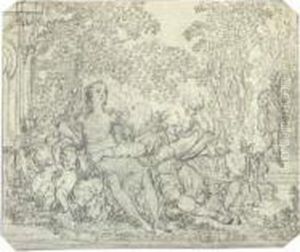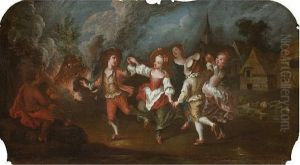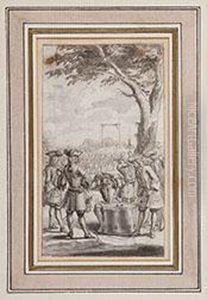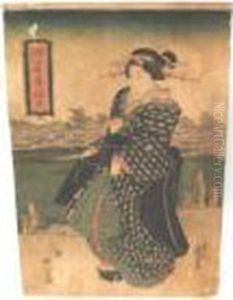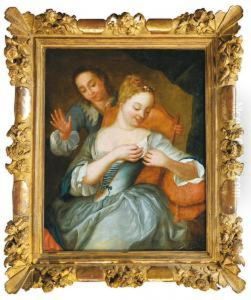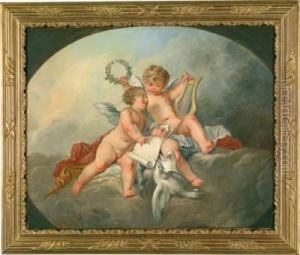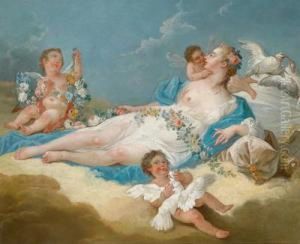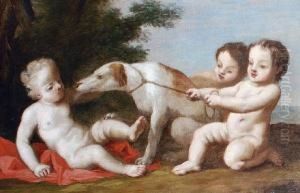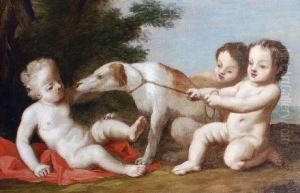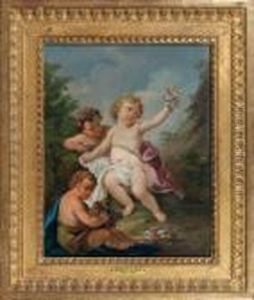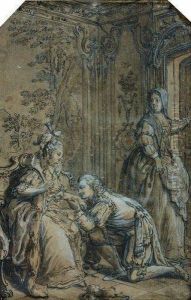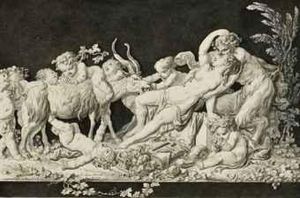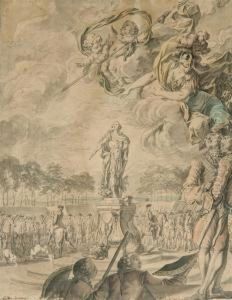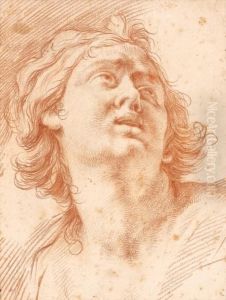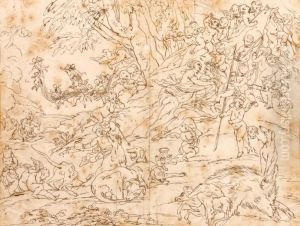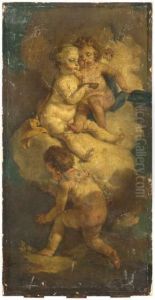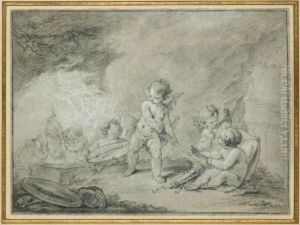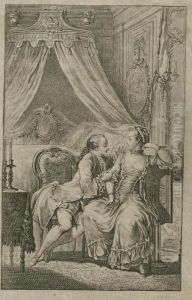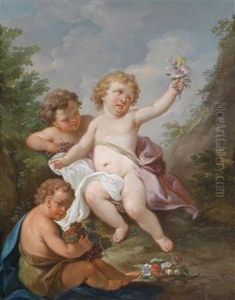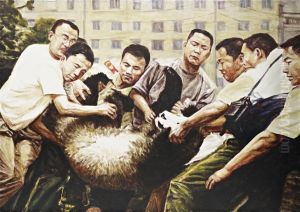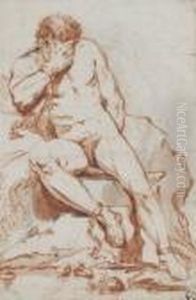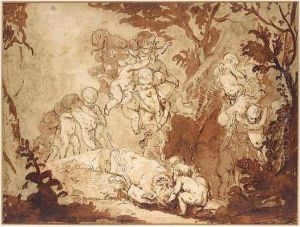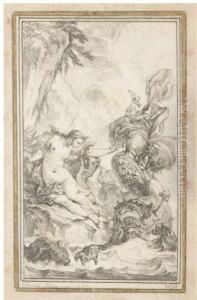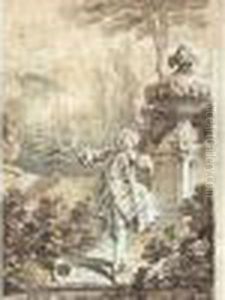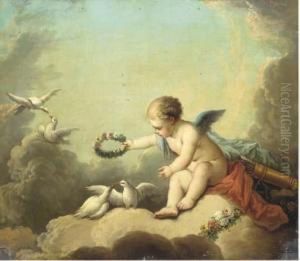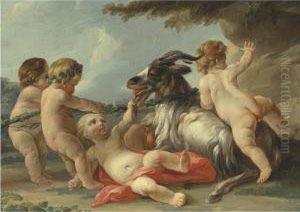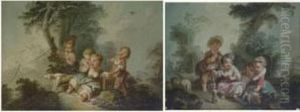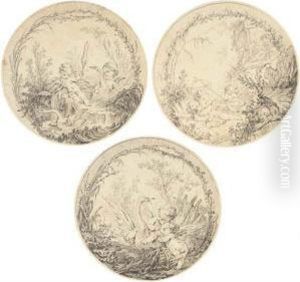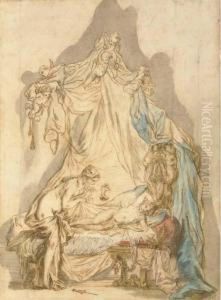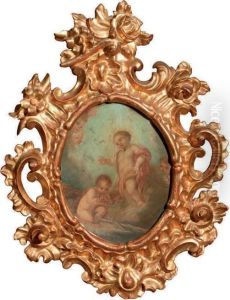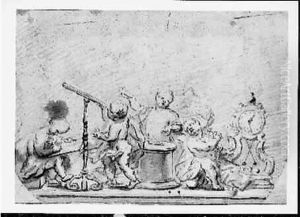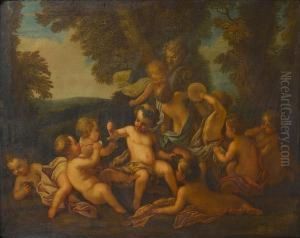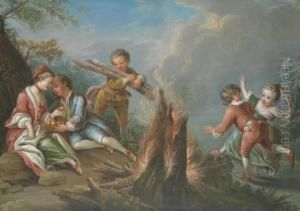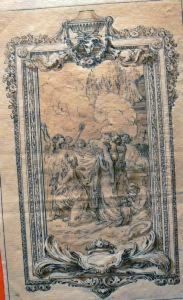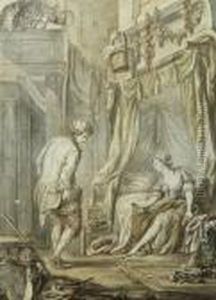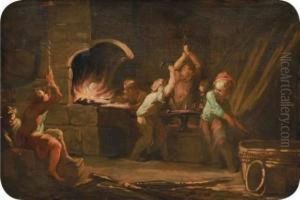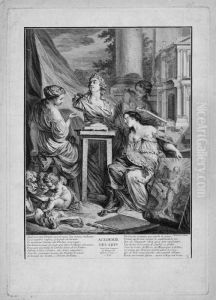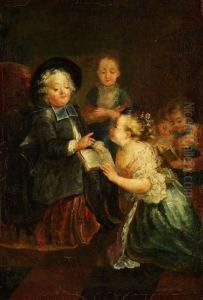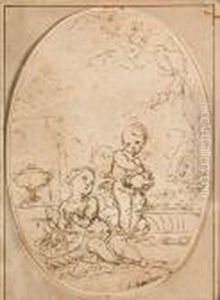Charles Dom. Joseph Eisen Paintings
Charles Dominique Joseph Eisen was a French painter and engraver born on August 17, 1720, in Valenciennes, which was then part of the Spanish Netherlands. He was the son of the painter François Eisen and was known for his Rococo style, characterized by lightness, grace, and decorative charm.
Eisen received his initial artistic training from his father and later moved to Paris, where he continued his studies under the tutelage of the history painter Charles-Joseph Natoire. His mastery of drawing and engraving led him to become one of the leading illustrators of his time. He was particularly noted for his illustrations for books, such as those for the works of French writers like Jean de La Fontaine and François Rabelais.
In 1741, at the age of 21, Eisen was admitted to the Royal Academy of Painting and Sculpture. By 1770, he was named a professor at the Academy, a testament to his skill and reputation in the French art world. Despite this, his career and personal life were not without controversy, and he faced some criticism for what was considered the licentiousness of some of his works.
Eisen's style was marked by his lighter touch and the use of delicate colors, which were well-suited to the tastes and sensibilities of the Rococo period. However, as the Rococo style fell out of favor and was supplanted by Neoclassicism, Eisen's work also faced a decline in popularity. Nevertheless, his contributions to book illustration remained significant, and his engravings continued to be appreciated for their quality and finesse.
Charles Dominique Joseph Eisen passed away on January 4, 1778, in Brussels. Though his name may not be as widely recognized as some of his contemporaries, his work has been influential in the realm of French illustration, and his artistic legacy lives on through the delicate and charming illustrations that adorn the pages of 18th-century literature.
